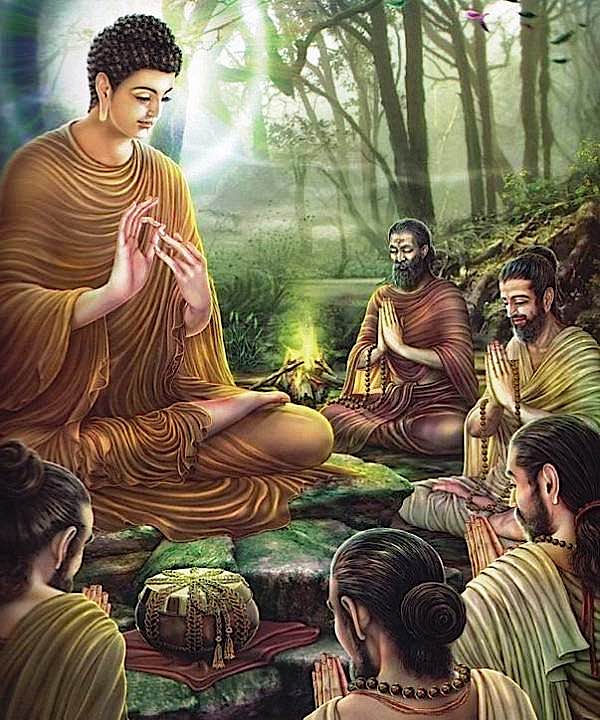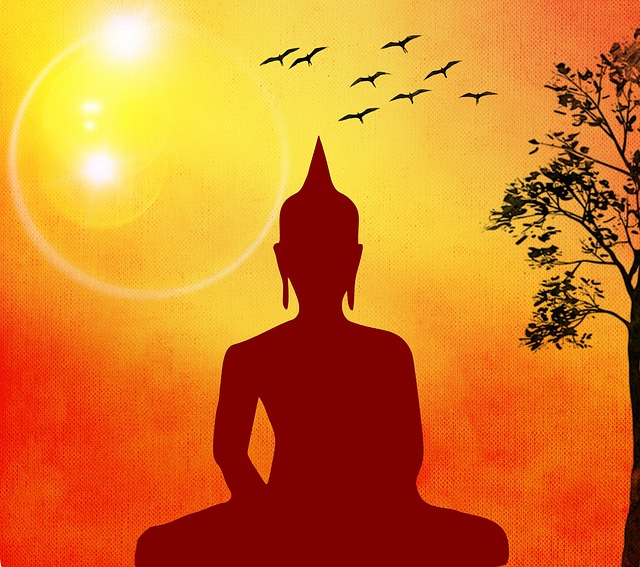Buddhism, religion, and philosophy that developed from the teachings of the Buddha (Sanskrit: “Awakened One”), a teacher who lived in northern India between the mid-6th and mid-4th centuries BCE (Before the Common Era). Spreading from India to Central and Southeast Asia, China, Korea, and Japan, Buddhism has played a central role in the spiritual, cultural, and social life of Asia, and during the 20th century, it spread to the West.
Ancient Buddhist scripture and doctrine developed in several closely related literary languages of ancient India, especially in Pali and Sanskrit. In this article, Pali and Sanskrit words that have gained currency in English are treated as English words and are rendered in the form in which they appear in English-language dictionaries. Exceptions occur in special circumstances—as, for example, in the case of the Sanskrit term dharma (Pali: dhamma), which has meanings that are not usually associated with the term dharma as it is often used in English.
Pali forms are given in the sections on the core teachings of early Buddhism that are reconstructed primarily from Pali texts and in sections that deal with Buddhist traditions in which the primary sacred language is Pali. Sanskrit forms are given in the sections that deal with Buddhist traditions whose primary sacred language is Sanskrit and in other sections that deal with traditions whose primary sacred texts were translated from Sanskrit into a Central or East Asian language such as Tibetan or Chinese.
Life of the Buddha

The evidence of the early texts suggests that he was born as Siddhartha Gautama in Lumbini and grew up in Kapilavasthu, a town in the plains region of the modern Nepal-India border and that he spent his life in what is now modern Bihar and Uttar Pradesh. His father was a king named Suddhodana, his mother was Queen Maya, and he was born in the Lumbini gardens.
When he reached the age of 16, his father reputedly arranged his marriage to a cousin of the same age named Yasodhara. According to the early Buddhist Texts of several schools, and numerous post-canonical accounts, she gave birth to a son, named Rahul. Siddhartha is said to have spent 29 years as a prince in Kapilavasthu.
At the age of 29, Siddhartha left his palace to meet his subjects. Despite his father’s efforts to hide from him the sick, aged, and suffering, Siddhartha was said to have seen an old man. When his charioteer Channa explained to him that all people grew old, the prince went on further trips beyond the palace. On these, he encountered a diseased man, a decaying corpse, and an ascetic. These depressed him, and he initially strove to overcome aging, sickness, and death by living the life of an ascetic.
According to the Buddhist sutras, Gautama was moved by the innate suffering of humanity and its endless repetition due to rebirth. He set out on a quest to end this repeated suffering. Early Buddhist canonical texts and early biographies of Gautama state that Gautama first studied under Vedic teachers, namely Alara Kalama and Uddaka Ramaputta, learning meditation and ancient philosophies, particularly the concept of “nothingness, emptiness” from the former, and “what is neither seen nor unseen” from the latter.
Finding these teachings to be insufficient to attain his goal, he turned to the practice of asceticism. This too fell short of attaining his goal, and then he turned to the practice of dhyana, meditation, which he had already discovered in his youth. He famously sat in meditation under a Ficus religiosa tree now called the Bodhi Tree in the town of Bodh Gaya in the Gangetic plains region of South Asia. He gained insight into the workings of karma and his former lives, and attained enlightenment, certainty about the Middle Way as the right path of spiritual practice to end suffering (dukkha) from rebirths in Saṃsara.
As a fully enlightened Buddha, he attracted followers and founded a Sangha (monastic order). Now, as the Buddha, he spent the rest of his life teaching the Dharma he had discovered and died at the age of 80 in Kushinagar, India.
Teachings of Buddhism

Four Noble Truths
- The world is full of sorrow.
- There is a cause of sorrow.
- The cause of sorrow is desire.
- Sorrow could be eliminated by annihilating desire.
8 Fold Paths / Astangika Marg
- Right belief
- Right conduct
- Right memory
- Right meditation
- Right speech
- Right thought
- Right means of livelihood
- Right action
10 Teaching
- Not to harm living begins
- Not to tell a lie
- Not to sleep on high & broad bed
- Not to take what is not given
- Abstain from evil behavior
- Abstain from eating at a forbidden time
- Abstain alcoholic drink
- Abstain receiving gold & silver
- Abstain using jewelry
- Abstain of music, singing, dancing & drama.
Concept of Salvation in Buddhism
According to Buddha, a person has to remain trapped in the cycle of life & death because of wrong deeds. Salvation is possible through knowledge (Janamarg). The 4 noble truths represented true knowledge. The eightfold path & ten teachings were put forward by Buddha to enable people to annihilate their desire & avoid wrong deeds.
In Buddhist philosophy, salvation is known as Nirvana. It represents freedom from the cycle of birth & death. At death person attain Mahaparinirvana.
Other Elements of Buddhist
Buddha rejected the idea of the soul. He believed in soullessness. Buddha didn’t say anything about the existence/non-existence of God. Buddhism believed in the idea of conditioned co-production (pratitya Samutpda).
According to this idea, one state of life leads to the next that is present activity shape the future. Buddhism didn’t believe in the infallibility of the Vedas. He refused to accept Vedas as the ultimate truth. Buddha condemned priestly domination rituals & ceremonies.
Buddhism believed in the efficacy of the middle path that is neither path of existence luxury nor the existence of self-asterism. Non-violence but within practical limits. Buddhism accepted the Varna system but only in modify the form. In the Varna system put forward by Buddhism Kshatriya preceded over Brahman. Doesn’t believe in untouchability. There are references of chandala teachers in Buddhism literature.
Buddhism recognition slavery. Slaves were not allowed to enter into the monastery without the permission of the master. Buddhism’s attitude forward to women was non-egalitarian. Initially, he was against the entry of women in Buddhist Sangha but when his foster mother Prajapati Gautami & his chief disciple Ananda requested repeatedly, women were allowed to center into Sangha with some restrictions on their activity.
Influence of Upanishad on Buddhist Philosophy
Upanishad reflects 1st reaction against Brahmanical dominance. They condemned rituals & ceremonies. According to Mundaka Upanishad, the rituals & sacrifices are broken boats that can’t fairy persons across the ocean of life. A similar attitude is found in Buddhism towards priestly dominance as well as rituals & ceremonies.
The Upanishad philosophy emphasizes non-violence. Violence sacrifice was condemned in UP. Buddhism also believes in non-violence. Upanishad believes in the inefficacy of the path of knowledge (Janna Marg) for the attainment of salvation. Buddhism also believes that salvation only possible only through knowledge.
Difference between Upanishadic philosophy & Buddhism
Upanishad believes in the idea of soul & transmigration of the soul. Buddha rejected the existence of the soul, it believes in soullessness. Upanishadic philosophy revolved around the idea of one supreme deity – Brahma. Everything revolves around Brahma. Every individual living soul) is considered as an expression of Brahma. This idea of monotheism (Adwaitawad). This idea of monotheism is of central significance in U.P.
Buddha didn’t say anything about the existence & non-existence of God. The concept of salvation is different in Upanishadic philosophy & Buddhism. In U.P salvation is known as “Moksha” Moksha lies in the merging of the individual soul with the supreme soul that is Brahma once a person attains Moksha, the soul of such person reaches heaven & reside there forever without coming to this world. Moksha is identified with ultimate bliss. This is the place where the life cycle doesn’t end for the soul, it only ends for the body. Moksha is attained only on death.
In Buddhist philosophy salvation is known as “Nirvana”. It’s freedom from the cycle of life & death. A person can achieve Nirvana within the lifetime itself, on the death person attain Mahaparinirvana. Ideas of heaven & hell found in the Universe are absent in Buddhism. According to the Upanishad god, Brahma is the creator of the universe & he sustains the universe. Buddhism says nothing about the creation & sustenance of the universe.

